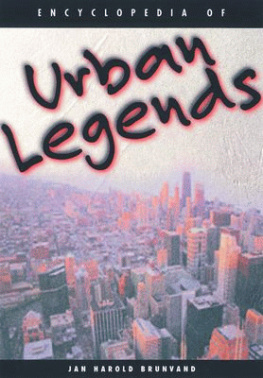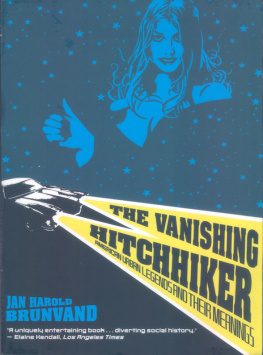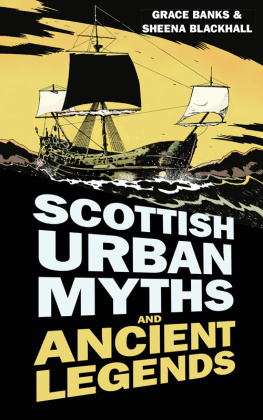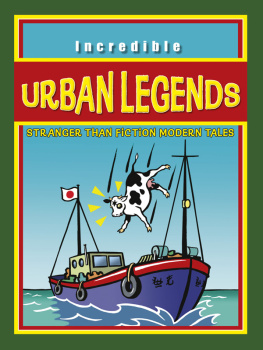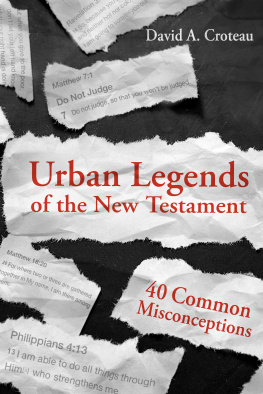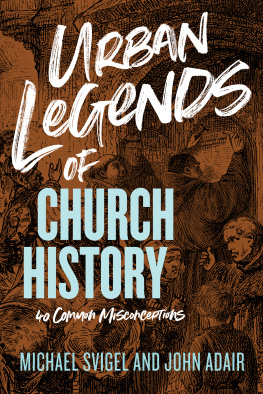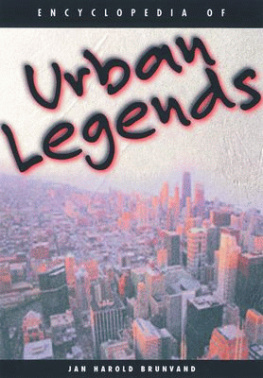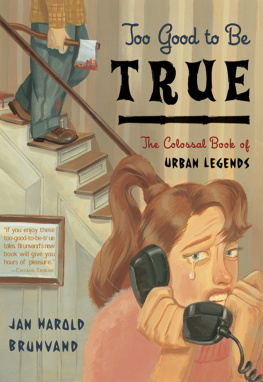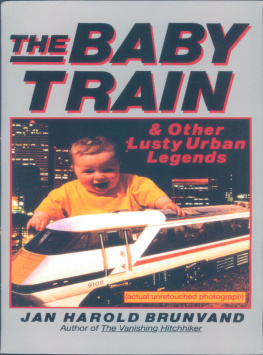Page 1
A
Abductions
See
Academe, Legends of
College and university campuses, despite being centers of research, learning, and sophistication, are also fertile grounds for the growth of legends and other folklore. As Barre Toelken points out, students can be seen as members of a distinct folk group, the members of which are separately literate but communally aliterate. That is, while campus folk are undeniably literate, much of their shared lore of campus life and traditions is transmitted not in print but by means of customary example and word of mouth. What is true of students in this regard is equally so of faculty and staff.
The legends of academe (ignoring here all the other folkloric forms found on campus) typically concern either eccentric faculty members (The Acrobatic Professor, The Trained Professor, etc.) or crises among students (The Roommates Death, The Gay Roommate, etc.). Legends about examinations and term papers abound on campuses,
Page 10
their safety records are good and their crime rates are no higher than elsewhere. This folklore seems to suggest that behind the facade of innocent family fun and entertainment lurk hidden dangers that the press refuses to report. (In this respect, amusement park stories are similar to those concerning shopping mall crimes.) Commonly these legends name a specific nearby park and make the claim that someoneoften a childwas injured or killed recently without any notice being released to the public.
Many such legends describe snakes, scorpions, spiders, or other venomous creatures lurking inside the rides and other attractions. There are accounts of water snakes in the Tunnel of Love and log-flume rides, rattlesnakes nesting in roller coasters or bumper-car rides, and other biting creatures infesting the merry-go-round horses. Usually, these intruders are said to have nested in the rides either during construction abroad (often India) or during winter storage; the creatures went undetected when the rides were set up in the spring.
In an updating of these stories, some Playlands of modern fast-food outlets are said to have poisonous serpents buried in the bins of plastic balls in which happy children jump and play. Nobody, of course, ever knows an actual child who was bitten, since the tragedy always occurs to a friend of a friend.
Another amusement park danger theme is that of electrocution when a person accidentally makes contact with a hot electrical wire in a fun house, a ride, or some other carnival attraction. One version of this theme claims that a boy was electrocuted when he sneaked out of a car and urinated on the electric rail of a ride.
A major fear of many parents is represented in legends about kidnappings that supposedly took place at amusement parks. Children are said to have been snatched from their parentsor else nabbed while they lag behind the rest of the groupand tossed over the fence of the park to a waiting accomplice. The kidnapper escaped, and the child was never found again, although sometimes it is said that he or she was recognized in a kiddie-porn film. No such actual crime has ever been documented, and these stories migrate from park to park and region to region.
See also
References:
Curses!, 3739; Too Good, 348349; Vanishing Hitchhiker, 182184.
Page 100
See also
References:
Baby Train, 113154; Michael Goss, The Halifax Slasher and Other Urban Maniac Tales, in Bennett and Smith, eds., A Nest of Vipers (1990), 89111; Mexican Pet, 137159; Too Good, 299320; Eleanor Wachs, Crime Victim Stories: New Yorks Urban Folklore (Bloomington: Indiana University Press, 1988).
Cruise Control

Someone buys a new camper-van equipped with every convenience and option, including cruise control. After being briefed by the salesman on the operation of the vehicle, the buyer drives out and heads home. Once up to highway speed, he sets the cruise and steps into the back of the van to make himself a cup of coffee.
This story of technical incompetence dates from the early days of cruise control (mid-1970s) and is reminiscent of similar legends about push-button gear shifts and automatic transmissions. In common with these other car legends, Cruise Control does not usually go on to describe the resulting crash.
The buyer in various versions may be described as a foreigner (often an Arab), a member of a racial minority, a senior citizen, a youngster with more money than brains, or a woman; thus, the legend variously displays xenophobia, racism, sexism, or ageisma version for every narrow-minded teller, who presumably would never confuse cruise control with automatic pilot.
In a front-page article on humorous insurance claims, the Wall Street Journal (July 9, 1986) repeated a female version, claiming that an insurance company had actually paid for the damages. An inquiry to the newspapers source revealed that it was simply a story in oral circulation among insurance claims managers.
Page 101
See also
References:
Choking Doberman, 6365; Too Good, 295296.
The Crushed Dog
A young man is a houseguest of a prominent family, usually people who are important to his own future. In his bedroom he accidentally spills an inkwell, spoiling a carpet or other furnishings. His attempts to clean up the mess fail, and he slips away in the night, too embarrassed to confront his hosts. Some time later he is forgiven and invited back, but this time he accidentally sits on a small dog concealed on an overstuffed chair in a dimly lit parlor. He hides the dogs body and flees again, this time never to return.
The two-episode structure of this story is unusual for urban legends. Indeed, much of the circulation of The Crushed Dog is in printed sources. But the story has an oral tradition as well, with variations on the reason for the overnight visit, the means by which ink was spilled, the breed of dog, where the body is hidden, and so on. Sometimes the episodes are reversed, and there are a few variations on the nondog portion of this farcical comedy.
The Crushed Dog illustrates the anxieties people may feel when trying to make a good impression, especially in an unsettling social situation. A few versions describe an American abroad who is intimidated and confused by foreign customs. The legend also reveals disdain for small breeds of essentially useless lapdogs that are preferred as pets by some wealthy folks.
See also
References:
Curses!, 135137; Too Good, 5860.
Culture-Clash Legends
Various stories of misunderstandings occurring when someone tries to behave appropriately in another culture. Several such anecdotes center on tea bagswell known in the United States but a puzzle to some foreigners. The unaware outsider may try to tear open the bag to get the
Page 102
tea leaves out; then, after having the use of the bags demonstrated, the outsider sweetens his tea with the unopened sugar packet. In a variation, Americans hoax a foreign delegation at an international conference by putting their tea bags into their own mouths and drinking hot water through the bag. The foreigners follow suit.
Doubtless there are similar stories about Western tourists misusing chopsticks. Another kind of revenge for such embarrassment comes in stories about Americans adopting some text in Chinese or Arabic script as a decorative device, not realizing that the text contains an off-color or otherwise embarrassing message. In one version a woman knits Chinese characters into a sweater, taking the pattern from a restaurant menu. Later someone translates the text on her sweater as, This dish cheap but unmistakably good.

